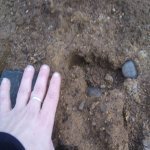Everything you said is so on point, ShadowBorn. And yes, you called it. For a scientist and thinking person who is of the caliber of Dr. HV Hart, and who can read and understand and interpret the data of DNA results, to have invested in some funding of the project says a lot. And you're correct, the road to discovery is quite narrow indeed: Either a bullet, remains, or DNA.
As Dr. Hart stated: "The entire Neanderthal genome was sequenced from HIGHLY degraded DNA."
That tells me that degraded Human DNA from the soil under the nesting sites might not be an issue. For example: genus, bear....genus, deer....genus, elk....genus, racoon....genus, different varieties of birds....and genus, Homo. All of those organisms and more were detected from that soil.
So, on the flip side, what wasn't detected? Genus, Chimpanzee....genus Gorilla....genus, Orangutan....genus, monkey.
So, genus Homo was detected. DNA degraded Homo. That might seem to indicate that Sasquatch, if in fact the genus Homo DNA that was discovered actually belonged to it, could indeed be very close to Human. But being degraded "Human" DNA, what could have been the elements needed to distinguish "Homo Sapien" from "Homo Sasquatch" simply could not be sequenced to a resolution that would show the Sasquatch. Because if the creature IS only different by .6-.9 percent? If it's really that close? Then only very good DNA might be needed in order to prove its existence. Still in all, I think Dr. Hart would have liked to see the test result's data.



